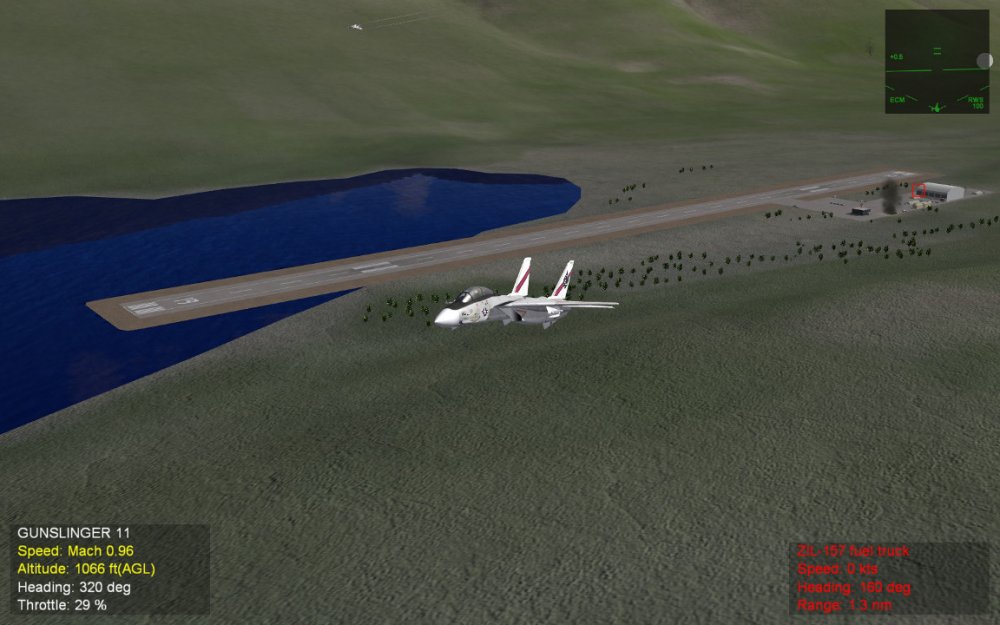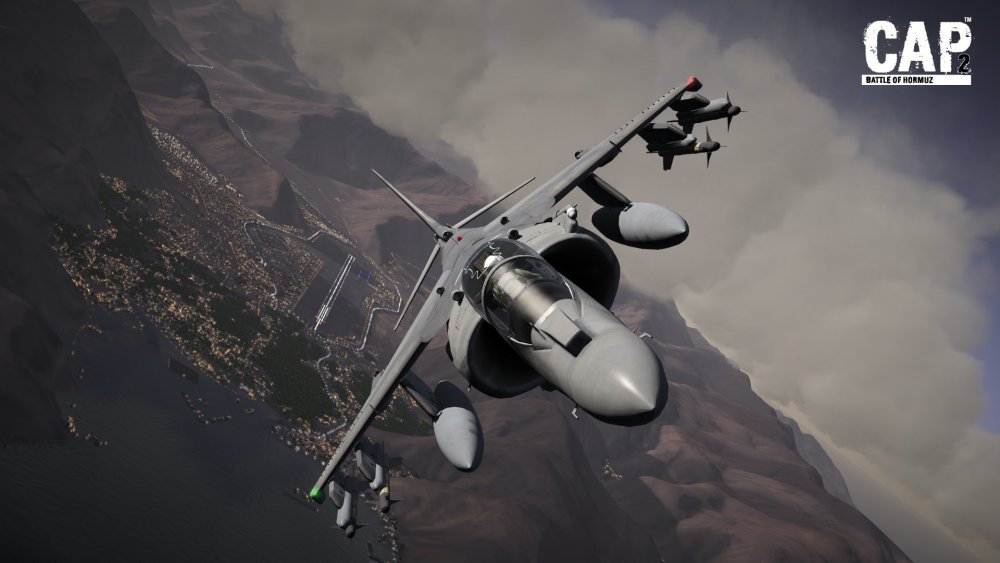-
Posts
9,137 -
Joined
-
Last visited
-
Days Won
27
Content Type
Profiles
Forums
Gallery
Downloads
Store
Everything posted by MigBuster
-
Strike Fighters Mobile in Space?
-
Now for a quick look at an F-16 flight combat simulator you may have heard of, in particular the only version of Falcon 4.0 currently in development. Benchmark Simulations official add on to Falcon 4.0 is called BMS 4.33 (currently upgrade 4) and to use you need to buy the original 1998 Microprose Falcon 4.0 from places such as GOG.com and then install that first. Then you install BMS 4.33 after downloading via the torrent from the BMS web site. Now if you are lucky you perhaps played the original or one of the other versions, or even the other official release Falcon 4.0 Allied Force from 2005 (that I will confirm BMS most certainly DOES NOT work with). However if you have not, you will be starting a learning and somewhat challenging journey, which is about what these types of things are all about after all. Things like the Avionics go very in depth and 4.33 brought with it a Maverick Handoff procedure with the targeting Pod that will make grown men cry – although I am not entirely sure a certain defence contractor couldn’t have made it easier if they had tried! You might also have noticed the Avionics Configurator option on the splash screen that already caters for about 40 different versions of the F-16. That’s right if you are not familiar with F-16s then erm well even a Block 50 for example has different versions with different avionics and capabilities depending on the year (upgrades) and the country it was sold to and this is impressively catered for. I will have a Block 30 with GE-132 and go faster stripes please Although Falcon BMS does still trounce all in its path in certain aspects I am going to briefly start on one of the less impressive parts of Falcon, that being the visual environment. Despite its 1998 origins, limitations have been progressively overcome to improve this area also. BMS 4.33 Came with many new ground and air objects as well as a new terrain set with trees by Polak. Like Strike Fighters there are some very talented individuals who have spent years providing professional level mods for free. I will give mention to Falcon Legend JanHas (http://www.janhas.net/) who has been around for…ever it seems. Real credit to the guy and rest be assured every rivet is polished to perfection to provide models as good as or better than anything else. His mods also come with comprehensive install documentation – and yes you do need it. New afterburner flame most welcome Installing mods is not as easy as Strike Fighters, there are bits you copy and paste but the models still need LodEditor to install them. Having just installed pretty much all of the JanHas mods I can tell you that despite it looking complex initially you are just pressing buttons and changing a few numbers at the end of the day so after the first few it becomes pretty easy – just time consuming having to do it manually. Why are these mods not in the baseline install making my life easier? - Well the reason is I have read that BMS have certain standards they keep to so it still runs on lower spec hardware. After a Herculean effort to get the mods installed! Also as with Strike Fighters, Modders have created different theatre’s for Falcon 4 over the years including the middle east, Balkans and Germany (Ostsee by TomKatz) that even makes an attempt to populate the terrain with well placed 3D buildings. So there you have it, graphical improvements have been slow because it requires good samaritans with free talent with free time, but it’s always nice to see there has been progress in that area. I have not mentioned the internal view because that is already more than good enough, especially considering most of a campaign is where I’m at anyway!
- 2 replies
-
- 5
-

-
- falcon 4.0
- bms
-
(and 1 more)
Tagged with:
-
We wanted to drop you a round-up of what’s been happening with CAP2 development over the last few months. As you can see from the summary below, update pace is gaining momentum. This is due to continue as we bring you a run of smaller updates, focused on all aspects of aircraft AI. We are excited about December as we finally start to bring the missions to life! Current work is focused on all aspects of aircraft AI. This will improve things such as: Dogfights AI aircraft mission integration (taxiing, AI flight member roles) AI airbase traffic AI aircraft weapon deployment (AA & AG) AI awareness of aircraft state (fuel, weapon state, radar, RWR) A2A refueling. This means for example, in a training mission you might see a tanker takeoff while your flight taxis to the runway. You takeoff, form up and hit training area targets line astern, refuel and return to base. Another example, for the Mach Loop you may be in a flight of four aircraft transiting the loop where you may be lead or following the flight leader. Live now We’ve dropped four patches over the past couple of months and the current version (v810.7) is now live across all branches (including VR). Here’s Ed’s posts from the Steam community hub detailing what these these four patches included: V810.4 Terrain editor - We've completed a lot of background work on the terrain editor which means we can now rapidly improve areas of interest from the base imagery and OSM data. We intend to make the editor available in the future for people to customise and share terrains, together with a mission editor. Training missions - We've used the improved editor to begin building the Yuma training missions. You may discover the newly populated target ranges. Mission planner Improvements - We've fixed some of the issues with the mission planner and it also now shows elevation as well as coast line. You will see that the map now includes most of the UK and the Yuma Map extends up to the Grand Canyon. In the future we will also extend the satellite imagery and OSM data - either through DLC or a future update. Easter Egg - Many players have now found this in the UK map, well done! Richer environment - As you can see from the screenshot below of the Harrier leaving Khasab we have added thousands more buildings and lots of additional vegetation. You may be aware (and have contributed - thank you!) that this is done by adding more OpenStreetMap data. It's been done as an aside and hasn't impacted general development. Abu Musa and Kaneohe Bay are also now more significantly built up. We've also added a host of custom objects including power lines, lighthouses, water tanks, ATC towers, rigs etc. Fuel Tanks - As you can also see from the screen above, the Harrier now has external fuel tanks, including associated fuel flow logic and displays, you’ll be able to mod them soon. Terrain Lighting - We've added lighting to roads, runways, taxiways and buildings, illuminating villages and cities which really adds to immersion. In case you missed it here’s the promo from a few weeks ago showcasing this. You will also see that we’ve improved vegetation, adding different trees and increasing their density. Cockpit illumination - As you can see from these before and after shots, the Harrier cockpit now has night illumination. It's easy to see dials/gauges around sunset. You can separately adjust the lighting intensity for self illuminated instruments and the cockpit floodlights. The full day/night cycle will come in a subsequent update. We've got a sky shader to complete which bounces a lot of rays through the atmosphere and produces great sunsets and sky throughout the 24hr cycle. v810.5 Mostly a bug fix build, notable changes include: Controls: Control and shift on mapped control keys are now saved. Controls: OEM keys are labelled correctly. Controls: Added default mappings for keyboard, gamepad, joystick. HARM: firing crash fixed. HARM Mission: mission starts. Terrain LOD: settings bug fixed. You can select Low, Medium, High, Ultra. Flight model: fix for a drag calculation. Time Of Day controls: added to adjust current time and environment lighting. V810.6 Added fixes for fullscreen monitor selection. When in fullscreen mode, changing the selected output monitor is immediate. Also the monitor label has an index added to distinguish between identically named monitors (generic pnp display...) While working on default controls I realised none of the controller manufacturers seem to use the correct USB usage codes for controller buttons or axes/sliders which have a specific function. There are codes defined for controls such as throttle, chaff, flaps, trim etc. It'd be great if they used them where relevant as auto mapping a controller would be pretty simple. Anyway, I'm adding default settings for common controllers which will be included in coming updates. I've also begun work on the axis response curves UI. The TOD/lighting controls are pretty cool. Give them a try, you'll probably find yourself constantly tweaking the light levels. Once the updated day/night sky shader is complete you'll be able to adjust the full 24hr cycle, plus advancing mission time will be added. The terrain LOD settings fix/update improves the appearance of distant lights popping into view and fixes an issue where extra scenery was being drawn. v810.7 The debug keys for time shifting and cloud regeneration are available in Controls->Misc You can accelerate time from 4x to /32 (decelerating 32x was useful for testing things like gear animations) A crash on starting Hawaii free flight is fixed. You can now add your own cockpit photo. There's a directory 'Mods - Examples' in the game folder which details how to add your photo. Should you buy CAP2 now? If you don’t yet own CAP2 obviously we’d love for you to join the crew. We encourage you to read the store page details carefully first, particularly with reference to what features are currently enabled so that you have the correct expectation from the current build. Reviews If you are enjoying CAP2 we would appreciate a quick Steam review as it greatly increases visibility within the store.
-
DCS: AV-8B Night Attack V/STOL Released! We are delighted to announce that DCS: AV-8B Night Attack V/STOL by RAZBAM was released into Early Access on 29 November. This is the second offering from RAZBAM for DCS World after their critically acclaimed DCS: M-2000C. The AV-8B continues their dedication to detailed craftsmanship with this iconic aircraft. DCS: AV-8B Night Attack V/STOL Web Page: www.av-8b.dcs-world.com Video: DCS: AV-8B Night Attack V/STOL Note: DCS: AV-8B Night Attack V/STOL uses our new, keyless protection system. This system requires periodic internet connections. About DCS: AV-8B Night Attack V/STOL: The AV-8B project was born in the early 1970's as an effort to improve the operational capabilities of the AV-8A first generation Harrier. The AV-8B made its maiden flight in November 1981 and entered service with the United States Marine Corps in January 1985. It later evolved into the AV-8B N/A (Night Attack) and AV-8B Harrier II Plus. The first flight of a modified AV-8B in the night attack configuration was on June 26th, 1987. Deliveries to the USMC began in September of 1989 to VMA-214 at Yuma, Arizona. Follow-up units based out of Yuma received their Night Attack AV-8Bs by the end of 1992. In 1984 the AV-8B N/A variant (originally known as the AV-8D) included the NAVFLIR (Navigation Forward-Looking Infrared camera, consisting of a GEC-Marconi FLIR system mounted in the nose) for night operations. Additionally, GEC Cat's Eyes night vision goggles were provided to the pilot as well as a revised cockpit with color MFDs, a wider field-of-view HUD display, a color CRT digital moving map and "heads-down" capability. The AV-8B N/A also sports four Tracor ALE-39 countermeasures dispensers along the top of the rear fuselage, in addition to two ALE-39 dispensers along the lower rear of the fuselage. The AV-8B N/A also fields an updated version of the Rolls-Royce Pegasus 11-61 (F402-RR-408) vectored-thrust turbofan engine. The subject of this study level simulation is the AV-8B N/A Bu No's 163853 and up which are the latest variant of this very capable AV-8B variant. Key Features of DCS: AV-8B N/A VTOL by RAZBAM include: Advanced Flight Model that also provides realistic performance and Vertical Takeoff and Landing (VTOL) characteristics Highly detailed external 3D model and textures with animations Highly detailed and accurate 6 DOF cockpit with high resolution textures, specular and bump mapping, and mouse-interactive controls Highly realistic modelling of the aircraft systems including electrical, fuel, hydraulics, lighting, engine and navigation that includes: Digital Engine Control System (DECS) Automatic Fuel System Air Refueling System Electrical Power System External Lighting Internal Lighting Hydraulic Power Supply System Flight Control System (FCS) Head-Up Display (HUD) Up-front Control (UFC) Option Display Unit (ODU) Multipurpose Color Displays (MPCD) VREST Computer (for jet-borne flight) Air Data Computer (ADC) Environmental Control System (ECS) On-Board Oxygen Generating System (OBOGS) Realistic weapons, sensor, and defensive systems include: Air-to-Air and Air-to-Ground GAU-12 Equalizer 25 mm (0.984 in) 5-barreled Rotary cannon pod 6 under-wing pylon stations holding up to 9,200 lb (4,200 kg) of payload which include: AIM-9 Sidewinder or similar-sized infrared-guided missiles AGM-65 Maverick Air-to-Surface missiles Mark 80 series of unguided bombs (including 3 kg [6.6 lb] and 14 kg [31 lb] practice bombs) Paveway series of Laser-Guided Bombs (LGBs) Joint Direct Attack Munitions (GBU-38, GBU-32, and GBU-54) Mark 20 Cluster Bomb Units (CBUs) AN/AAQ-28V LITENING targeting pod ALQ-164 ECM Pod Several skins Detailed Operational Manual and Pocket guide Instant Action, Single, and Training Missions Detailed representation of the USS Tarawa (LHA-1), lead ship of her class. We hope you will enjoy this fabulous new product from Razbam. Here at ED we are all very impressed. A few words from our CEO, Dr. Igor Tishin Dear valued DCS World customers, Over the past several months, we have read your concerns and frustrations regarding aspects of the growth of DCS World. In particular, the length of time that it has taken to create the unified DCS World version (DCS World 2.5) and our DCS World War II developments. I'd like to talk to you about both of these to help foster a clear picture of where we were, where we are now, and where we plan to be. First of all, thank you all for your support and being with us for the past 27 years and sharing our vision of what we believe the flight simulation genre can ultimately achieve. From the very beginning, when Eagle Dynamics was established in 1991, our main priority was the creation of Highly Realistic Flight Simulators. At that time, there were just seven of us when we released our first project: Su-27 Flanker 1.0 in 1995. Over the past 27(!) years, we've come a long way from a simple computer game, to a professional-level combat environment simulator. Today, we have about 80 internal programmers, artists, managers, testers and producers. Additionally, we have 18 partners and 3rd party developers that are participating in our internal projects, as well as developing their own modules for DCS World. During all of our history, we remain loyal to our initial dream of making the most realistic combat aviation simulations. Starting from one simple, Standard Flight Model (SFM) Su-27, we took our next step in 2003 with five aircraft for Lock On: Modern Air Combat (LOMAC). Following LOMAC, we created our first Advanced Flight Model (AFM) for the Su-25T in 2005. Next came our first Professional Flight Model (PFM) with the Ka-50 Black Shark and the A-10C Warthog in 2008 and 2009. For an aircraft like the A-10C, it usually takes about three years of hard work to develop the PFM. In parallel to development of the software for these aircraft, getting the required permissions (aircraft manufactures and government) can often be a big obstacle and time-consuming process. For both the Ka-50 Black Shark and A-10C Warthog, we spent two years of great effort to get such permissions! More recently, and with great difficulties, we finally signed the necessary agreements to allow the sale of our upcoming DCS: F/A-18C Hornet. The team has been working very hard on this project and we are at the point now where we are talking much more about it with regular updates. After a long period of developing needed technologies, research, design, and legal matters, we are nearing the point in which we will be able to provide the Early Access version of the Hornet. Right behind the Hornet, we have other modern, combat fixed-wing and rotary-wing aircraft ready for development within the Eagle Dynamics internal studio. Our talented 3rd parties are also working hard on other great aircraft like the AV-8B Night Attack V/STOL, F-14 Tomcat, FC-17, F-4E Phantom II, Mi-24P Hind, Bo-105, and others. Naturally, all 3rd party projects are only made possible with very active technical support from Eagle Dynamics. So, be assured that we have not given up our initial dream! Modern, combat aviation is alive and well in DCS World and will continue to be. One of the biggest factors in creating a great flight simulation is the graphics engine. This is also probably the most technically complicated. During our 27 year history, we have internally developed five(!) generations of graphics engines. This is a massive effort for such a small company, whereas many other companies use “off the shelf” solutions. We have evaluated other engines (MSFS, OSG, etc.), but we always returned to the own internal solutions because only they provided the capability and quality we demand for a modern, combat aviation simulation. The biggest needs has been the ability to render an environment that looks and performs great from 1 meter to 50,000 meters. Graphics cards are developing so rapidly that many companies are not capable of keeping their technology current with new hardware. After eight years of intense work, we recently developed a very stable version of our graphics engine that is based on DX11 and Deferred Shading technology. We are also developing our engine to take advantage of the Vulcan API to further improve game performance. It's important to understand that a graphics engine is not only a Scene Renderer, but the terrain creation tool technology is equally important. This is the main reason why we could not merge DCS 1.5 Caucasus and 2.1 Terrains for such a long and regretful time. To do this, we first need to convert all the terrains, missions, training, and campaigns that were developed over many years for Caucasus map to an absolutely new terrain data structure and adjust all applied programs. We've put a massive amount of effort into this effort and it is almost complete. We plan to release DCS World 2.5 in the coming weeks! Now, let's talk a little about DCS World War II and why it does not delay our modern day combat aircraft and why it's a valuable aspect of DCS World for us and you. We cannot deliver modern, complicated aircraft faster than we and our 3rd parties are already doing, but growing a business needs more and more revenue to grow the team and make better products. We were very surprised to find that the investment vs. generated revenue has been excellent for the World War II aircraft. In fact, the P-51D Mustang has twice the cost effectiveness of the A-10C Warthog. We also realized that our World War II aircraft attract new customers that may have not otherwise been familiar with DCS World. Many DCS World War II pilots move to our jet aircraft that are within the integral DCS World. So, our World War II aircraft provide a good advertising environment for the DCS World concept as a whole. As we bring in new programmers, artists, and engineers to Eagle Dynamics, it is first necessary to place them on relatively more simple projects to get them up to speed. World War II aircraft are a great tool for this. Our new staff can use the World War II aircraft to learn our tools and sharpen their talents with DCS World development environment. They are separate from the main projects (like the F/A-18C) developers, and they are not involved with the modern aircraft development efforts. Otherwise, it would not be practical to develop the aircraft like the F/A-18C with staff split between projects. The Fighter Collection (TFC), Eagle Dynamic's principle partner, has one of the largest, private collections of World War II aircraft. TFC has been requesting World War II aircraft for DCS World for a long time and we cannot ignore our partners. TFC has been instrumental in its support for these projects. As you can see, DCS's World War II series doesn't compete with modern aircraft projects for development resources. In fact, it supports it. The same is true with the L-39 and Yak-52 projects. These two projects were also sought by government institutions, but we were also able to negotiate their release to you. I very much hope this all makes sense for you. We are reaching an important milestone of DCS World with the release of DCS World 2.5. This combined with an exciting list of new aircraft, new maps, and great new mission content, is furthering our dream from 1991. Thank you for being part of the journey with us! Sincerely, The Eagle Dynamics Team
-

Does TW ever have sales?
MigBuster replied to WallysWorld's topic in Thirdwire: Strike Fighters 2 Series - General Discussion
Only TK can answer that one........... -
Dear valued DCS World customers, Over the past several months, we have read your concerns and frustrations regarding aspects of the growth of DCS World. In particular, the length of time that it has taken to create the unified DCS World version (DCS World 2.5) and our DCS World War II developments. We’d like to talk to you about both of these to help foster a clear picture of where we were, where we are now, and where we plan to be. First of all, thank you all for your support and being with us for the past 27 years and sharing our vision of what we believe the flight simulation genre can ultimately achieve. From the very beginning, when Eagle Dynamics was established in 1991, our main priority was the creation of highly realistic flight simulations. At that time, there were just seven of us when we released our first project: Su-27 Flanker 1.0 in 1995. Over the past 27(!) years, we’ve come a long way from a simple computer game, to a professional-level combat environment simulator. Today, we have about 80 internal programmers, artists, managers, testers and producers. Additionally, we have 18 partners and 3rd party developers that are participating in our internal projects, as well as developing their own modules for DCS World. During our entire history, we have remained loyal to our initial dream of making the most realistic combat aviation simulations. Starting from one simple, Standard Flight Model (SFM) Su-27, we took our next step in 2003 with seven aircraft for Lock On: Modern Air Combat (LOMAC). Following LOMAC, we created our first Advance Flight Model (AFM) for the Su-25T in 2005. Next came our first Professional Flight Model (PFM) for the Ka-50 Black Shark and the A-10C Warthog in 2008 and 2009. For an aircraft like the A-10C, it usually takes about three years of hard work to develop a PFM. In parallel to development of the software for these aircraft, getting the required permissions/license agreements (aircraft manufactures and government) can often be a big obstacle and time-consuming process. For both the Ka-50 Black Shark and A-10C Warthog, we spent two years of great effort to get such permissions! More recently, and with great difficulties, we finally signed the necessary agreements to allow the sale of our upcoming DCS: F/A-18C Hornet. The team has been working very hard on this project and we are at the point now where we are talking much more about it with regular updates. After a long period of developing needed technologies (flight model and radar), research, design (data on late-LOT F/A-18C), and legal matters, we are nearing the point in which we will be able to provide the Early Access version of the Hornet. Right behind the Hornet, we have other modern, combat fixed-wing and rotary-wing aircraft ready for development within the Eagle Dynamics internal studio. Our talented 3rd parties are also working hard on other great aircraft like the AV-8B Night Attack S/VTOL, F-14 Tomcat, FC-17, F-4E Phantom II, Mi-24P Hind, Bo-105, and others. Naturally, all 3rd party projects are only made possible with very active, hands-on, technical support and creation of APIs from Eagle Dynamics. So, please be assured that we have not given up our initial dream! Modern, combat aviation is alive and well in DCS World and will continue to be. This is our bread and butter. One of the biggest factors in creating a great flight simulation is the graphics engine. This is also probably the most technically complicated. During our 27 years history, we have internally developed five generations of graphics engines. This is a massive effort for such a small company, whereas many other companies use “off the shelf” graphic engine solutions. We have evaluated other engines (MSFS, OSG, etc.), but we always returned to our own internal solutions because only they provided the capability and quality we demand for a modern, combat aviation simulation. The biggest needs has been the ability to render an environment that looks and performs great from 1 meter to 50,000 meters. This is where we believe our graphics engine is quite unique and powerful. Graphics cards are developing so rapidly that many companies are not capable of keeping their technology current with new hardware. After eight years of intense work, we recently developed a very stable version of our graphics engine that is based on DX11, Deferred Shading technology, and Physical Based Rendering (PBR). We are also developing our engine to take advantage of the Vulcan API to further improve game performance. Having a great looking game is moot if it does not perform well. It’s important to understand that a graphics engine is not only a Scene Renderer, but the terrain creation tool technology is equally important. This is the main reason why we could not merge DCS 1.5 Caucasus and 2.1 Terrains for such a long and regretful time. To do this, we first need to convert all the terrains, missions, training, and campaigns that were developed over many years for Caucasus map to an absolutely new terrain data structure and adjust all applied programs. We’ve put a massive amount of work into this effort and it is almost complete. We plan to release DCS World 2.5 in the coming weeks! Now, let’s talk a little about DCS World War II and why it does not delay our modern day combat aircraft and why it’s a valuable aspect of DCS World for us and you. • The Fighter Collection (TFC), Eagle Dynamic’s principle partner, has one of the largest, private collections of World War II aircraft. TFC has been requesting World War II aircraft for a long time, so we cannot ignore our partner. We and TFC agree that WWII combat aviation is a very interesting flight simulation genre, especially for customers that enjoy history and massive dogfights. TFC has supported this direction from the very beginning. • World War II aircraft attract new customers that may have not otherwise been familiar with DCS World. Many DCS World War II pilots move to our jet aircraft that are within the integral DCS World. So, our World War II aircraft provide a good advertising environment for the DCS World concept as a whole. • Many of our new programmers and artists are responsible DCS World War II. They are separate from our main project (like the F/A-18C) developers, and they are not involved with the modern aircraft development efforts. Otherwise, it would not be practical/efficient to develop aircraft like the F/A-18C with staff split between projects. Also, DCS World War II is a great “school” for new programmers before they take on extremely complicated Modern Air Combat projects. • We could deliver modern, complicated aircraft faster than we and our 3rd parties are already doing, but growing a business needs more and more revenue to grow the team and make better products. We were very surprised to find that the investment vs. generated revenue has been excellent for the World War II aircraft. In fact, the P-51D Mustang has twice the cost effectiveness of the A-10C Warthog. As you can see, DCS’s World War II series doesn’t compete with modern aircraft projects for development resources. In fact, it supports it! The same is true with the L-39 and Yak-52 projects. These two projects were also sought by government institutions, but we were also able to negotiate their release to you. We very much hope this all makes sense for you and sheds some light on these matters. We are reaching an important milestone of DCS World with the release of DCS World 2.5. This combined with an exciting list of new aircraft, new maps, and great new mission content, is furthering our dream from 1991. Thank you for being part of the journey with us! Sincerely, Eagle Dynamics Development Team from: https://forums.eagle.ru/showthread.php?t=196539
-

Thirdwire Campaigns
MigBuster replied to AJAY67's topic in Thirdwire: Strike Fighters 2 Series - General Discussion
There was one sure fire way to kill the Kiev battle group with zero mods and zero cheating essentially........but I am not going to put it here...you will have to PM me if you don't want to work it out . -
On behalf of the entire BMS development team, I am happy to announce that the latest iteration of the Billion Soft Falcon 4.0 total conversion modification - Benchmark Sims 4.33 U4 - is available for you to enjoy as of RIGHT NOW! Like U3, the changes and bugfixes in Update 4 are a direct consequence of feedback we got from some bigger MP sessions. There are no data or feature changes included in this patch. First things first: the "Falcon" trademark has a new copyright holder, Billion Soft (Hong Kong) Limited. We're very grateful to them that they support and enable us to keep releasing future BMS updates! BMS 4.33 U4 requires a legit installation of a Falcon 4.0 (all older and newer versions are accepted alike, i.e. Microprose, Hasbro, GOG, Steam, Retroism). The check is performed both at setup time and every time you start BMS. If no valid installation is found, BMS will exit with a corresponding error message. For those of you who are still in need of a legit Falcon 4.0 base installation, please be aware that Retroism is offering a special price for Falcon 4.0 for the upcoming black Friday weekend ($/€2.79)! U4 is an incremental update on top of U1 + U2 + U3, so you need to have the BMS 4.33 U1 Full Installer package and the corresponding 4.33 U2 Incremental Installer and 4.33 U3 Incremental Installer available on your PC. You can both update your existing U1 + U2 + U3 installation as well as perform a fresh U1 + U2 + U3 + U4 installation from scratch, as you like. See the installation instructions below for details. from: https://www.bmsforum.org/forum/showthread.php?32320-Falcon-BMS-4-33-U4-Incremental-Installer Changelog: Generic Information: - The build number string in the Falcon UI reads "4.33.4 Build 16083" after the update - No data or docu or config files have been changed, this update is a pure "code-only" patch - The shortcuts in the start menu and on your desktop will NOT be renamed to U4, feel free to rename them manually CODE: - Updated splash screen and monolog output for the new Falcon copyright holder: Billion Soft (Hong Kong) Limited - Significant performance improvements for importing ACMI .flt to .vhs: * Reduced time needed for import by at least a factor of 10 to 20 * Added monolog output, flt file size at START, duration summary and vhs size at DONE - In the UI chat windows, the participant tree title will now include the number of players in the chat, e.g. "(4)Lobby" instead of "Lobby" - Increased the disconnect timeouts for the transport layer to 60 seconds for increased stability in "short temporary network loss/disconnect" situations - Fixed mouse wheel not always working in UI - Multiple (potential) CTD/hang fixes: * memory depletion (OOM) CTD originating in a data range overrun * client CTD when exiting BMS * CTD related to input device sorting * CTD in DrawableTrail::DrawChunkBillBoards * CTD when exiting a campaign on a client due to invalid object access in UpdateIntel * CTD when checking in with AWACS * CTD in AirTaskingManagerClass::FindNearestActiveTanker * infinite loop in AirframeClass::CalcMach * CTD in VU message handling
-
Autumn 2017 Bonus Event Starting today at 1500 GMT and lasting until 27 November at 0900 GMT, you can use your bonus points to save up to 60% on most DCS World store items! Please note that this is a bonus event and not a flat sale on all modules. You can read about the bonus program here. If you have available bonus points, you can apply them during the store checkout process. Modules Terrains Campaigns DCS: World War II Assets Pack Update In our continuing effort to add more content to the World War II Assets Pack, several new AI-only aircraft are in development. These include the Ju-88, A-20, and C-47. The Junkers Ju-88 was a German, twin-engined medium bomber. Over 16,000 were produced and ranged in roles including bomber, dive bomber, night fighter, torpedo bomber, and others. The Douglas A-20 Havoc/Boston was a United States light bomber that was flown by several allied nations during WWII. The A-20 was a very versatile aircraft with good speed and maneuverability for a light bomber. The Douglas C-47 Skytrain was a work horse for the allies in World War II and served as a troop and cargo transport. Also known by the nickname "Gooney Bird", the C-47 was also instrumental in paratrooper operations. DCS: F/A-18C Hornet Cinematic Video – Over the Strait of Hormuz This week we bring you our second cinematic video for DCS: F/A-18C Hornet. Today we see our Hornet over our next, new map for DCS World: the Strait of Hormuz Map. This map is being specifically created to support our Hornet. However, like all DCS World maps, this map will support all DCS World aircraft modules and Combined Arms. Sincerely, The Eagle Dynamics Team
-
This image has been resized. Click this bar to view the full image. The original image is sized 1700x879. This image has been resized. Click this bar to view the full image. The original image is sized 1500x774. Scan, Lock, Fire! Heatblur F-14 Radar & Weapons Development Update Dear All, The entire Heatblur team is very hard at work on both the F-14, Viggen and other new projects. While we’ve tried to keep you up to date with smaller updates over the past few months; now may be a good time to give you a better overview of some of the systems development on the F-14! Much of the focus currently lies with high level, core elements of the F-14 that made it such a valuable replacement for many aircraft in the Navy and probably the most formidable and diverse fighter aircraft of its time. Much effort is currently being spent on our recreation of the Hughes Airborne Weapons Group 9 (or AWG-9), it’s various modes of operation and weapons, as well as continuing the development on JESTER AI, our AI RIO pilot companion! The AWG-9, heart of the F-14 Tomcat “The AWG-9 is made up of a radar, computer, interface between AWG-9 and weapons and the associated displays” James Perry Stevenson writes in the Aero Series 25 book “Grumman F-14 Tomcat”. He says further: “The primary purpose of the F-14 is to act as a weapons platform. To that end, then, the primary purpose of the AWG-9 is to control the four weapons it carries – the gun, the Sidewinder missile (AIM-9), the Sparrow missile (AIM-7) and the Phoenix missile (AIM-54). The AWG-9 weapon control system uses inputs from the radar and in conjunction with the computer, establishes target identities, establishes priorities, processes data for intercept geometry, establishes launch envelopes and monitors some of the F-14’s other black boxes.” What really set the AWG-9 apart for its time was the many functions it offered to both Pilot and RIO that no other aircraft had at that time. The AWG-9 radar can use both Pulse Radar and Pulse Doppler modes with six basic modes, which in its time made it absolutely second to none. These six main modes are: PDS: Pulse Doppler Search, RWS: Range While Scan, TWS: Track While Scan, PDSTT: Pulse Doppler Single Target Track, PS: Pulse Search, PSTT: Pulse Single Target Track. The AWG-9 also offers some ACM modes that would allow the crew to quickly lock onto a target in a high G, maneuvering fight, including: PLM: Pilot Lockon Mode (the pilot could lock on a target directly ahead of him), VSL: Vertical Scan Lockon (A vertical beam ahead high between +15° and +55° or ahead low between -15° and + 25° elevation and 4.8° azimuth from the aircraft datum line) MRL: Manual Rapid Lockon (Also called NRL or NFO Rapid Lockon) - which would give the RIO the possibility to manually steer the radar with his Hand Control Unit (or “HCU”) towards a visual target and lock it. This mode was rarely used. In addition the F-14 had a separate antenna for AIM-7 Flood Mode, which could be used in a situation when the radar would fail- alas this was considered fairly useless. (It has been described by our SMEs as a “Holy-shit-bad-idea-mode”, and pilots weren’t scored a kill during training if they used this mode). All of these radar modes have now been implemented and their functionality improved over the past few months. To some extent, JESTER AI is now able to operate some of these modes as well. Modeling the AWG-9 in great detail will make the experience of being an F-14 RIO great fun and challenging- as well as accurately representing the real world effectiveness of the F-14. All 4 air to air weapons of the F-14, both provided by ED (AIM-9M, AIM-9P and AIM-7M) and Heatblur (AIM-54A-Mk47, AIM-54A-Mk60 and AIM-54C-Mk47), as well as the M61 Vulcan Cannon, are currently implemented and available. These weapons constitute the core of the early F-14 experience. Sidewinder capability in the F-14 is fairly standard if you’re familiar with other western aircraft. The sidewinders support active cooling (must be activated on ACM panel to get a tone) and the SEAM (Sidewinder Expanded Acquisition Mode) function. In SEAM slave mode, the Sidewinder’s seeker head is slaved to the target that is locked with either the radar or TCS (Television Camera System) and starts tracking the target before the missile comes off the rail. The seeker can be commanded to SEAM lock by a pilot HOTAS button. The aircraft can carry a total of 4 Sidewinder missiles on 4 separate wing stations. Some rear aspect TCS snippets. Click to Enlarge! One of the most unique features of the F-14 is the optical sensor known as the Television Camera System. Apart from the ability to track and lock a target with the Radar, the F-14 provides the ability to observe camera footage of targets through the TCS. Acquisition of targets for visual identification on the TCS is super easy. You can slave the TCS to your currently locked radar target, or vice-versa if you’ve acquired a target using only your TCS. The RIO’s main displays for the interpretation of data delivered by the AWG-9 are the Detail Data Display (or “DDD”) and the Tactical Information Display (or “TID”). While we’ll go through these displays in more detail in upcoming updates, videos and the manual - one can simplify the distinction and note that the DDD is akin to a raw radar scope display, while the TID is a computer processed overview of that same data. Thus, a skilled operator will have to be proficient in using both the DDD and TID displays to achieve maximum efficacy. A typical TID display repeated on the Pilots HSI (placeholder cockpit!) The pilot is also equipped with two displays, the Vertical Display Indicator (or “VDI”) and the Horizontal Situation Display (or “HSD”). The pilot can select what these two indicators should display. The HSD can, for example, display navigational data, ECM (RWR) data - or serve as a “repeater” for the RIOs TID display. Note though, that keeping an eye on TID data and flying effectively is a tough challenge! So a good pilot will know when to trust his RIO. The VDI displays an artificially generated horizon, steering cues, navigational data or can also be switched to display TCS video footage. The VDI is sometimes also referred to as a “Heads DOWN Display”, since it can largely reproduce almost everything shown on the HUD. The DDD (Detail Data Display) and TID (Tactical Information Display) The DDD is really the lightning rod for all things AWG-9. A skilled RIO making great use of the DDD will make the F-14 an amazingly effective weapons platform. Being skillful in distinguishing single from multiple targets, picking out targets amongst ground and weather clutter and defeating defensive aircraft maneuvers is challenging. The F-14 radar controls allow the RIO to finely tune the radar and DDD display to really pick out targets with great precision (and in many cases, where other more automated radars of the era would fail!). In all Pulse Doppler modes, the vertical axis on the DDD shows target blips on a range-rate (relative radial velocity) scale, which can be somewhat difficult to interpret. A compiled example of AWG-9 Post-Processed Targets. Click to Enlarge! The DDD also, due to its nature as a raw type radar display, means that it has rudimentary ground mapping radar capability! We’ve further refined our ground radar technology which we created for the AJS-37 Viggen. While ground mapping is, perhaps, not as useful in an F-14 as in the Viggen- it can still be a helpful tool in bad weather, navigation and low light flight situations. The SMEs we’ve spoken to considered it to be an invaluable tool at times, especially in poor weather situations. A compiled example of AWG-9 Ground Mapping capability. Click to Enlarge! As important as the DDD is, it is however only really half of the equation. The TID is a large 9 inch circular display (sometimes aptly named the “Fishbowl”), and will show tracked targets (in RWS, TWS, STT modes) with velocity vectors (TWS and STT only). Targets can be “hooked” on the TID using the HCU (Hand Control Unit, basically the RIO’s “Joystick”, and additional detailed info like range, bearing, heading, ground speed etc. can be called up on the display depending on selected settings and the current radar mode. The TID can also show navigational data like waypoints, and marked ground positions relative to the aircraft, and is thus like a simple TAD system, but without a moving map. The most complete track file of the target in the scanning modes will be given in TWS, which can track up to 24 targets simultaneously and fire up to 6 Phoenix missiles. In TWS the targets are not locked, as they are in the PSTT and PDSTT modes. Instead, the computer tracks them by taking their last seen position and predicting the new position of the target in 2 second update intervals. During these updates it tracks the target’s information and can calculate the heading vector, ground speed and other required parameters. This gives the F-14 the advantage that its opponents will not know that they are being tracked by its radar, as their RWR will not register a radar lock. A compiled example of some AWG-9 TID Screens. Click to Enlarge! The limitation of the TWS mode is that only the Phoenix missile can be fired with guidance, and though it provides the same detection range as RWS (around 90NM for fighter sized aircraft under ideal aspect conditions, where 1NM=1.852km), the field of view is tied to the 2 second update and thus limited to a 2 BAR 40° or 4 BAR 20° search. TWS also has both manual and auto modes implemented, which means that the computer will prioritize targets automatically and suggest launch queues which the RIO can use to line up his targets. The TWS auto mode will also adjust the scan pattern by itself. The biggest field of view is provided in RWS which can be set to a 10, 20, 40 or 65 degrees left and right search pattern from centerline in either 1, 2, 4 or 8 BAR search mode, with the biggest pattern using a full 13 seconds to update (but covering a truly massive volume of sky) and the smallest pattern updating in a quarter of a second. While PDS provides only range rate (and thus cannot display targets on the TID), RWS provides range and range rate. PDS and RWS can be used to launch missiles in boresight modes. PDSTT and PSTT provide launch modes for all missiles and the gun. PS however provides a smaller detection range and is useful against beaming or notching targets. This comes as a trade off though, as it is very poor at detecting targets in front of ground clutter. Non Post-Processed radar returns in Pulse Search modes differ greatly. Click to Enlarge! The various radar modes also have somewhat differing parameters for range resolution, range rate resolution and angle resolution, depending on factors such as pulse length, pulse compression, pulse repetition frequency etc. This comes into play especially when trying to distinguish targets in close formations at longer ranges. We believe we have made a reasonable emulation of this within the confines of the DCS environment. Datalink is a hefty development task for us, and we’ve made good progress on this particular feature of the AWG-9. Currently, the F-14 receives data linked targets from the E-2 Hawkeye, other F-14 Tomcats, and U.S. Carriers. Eventually, commands like WILCO, CANTCO and other small bits of information will be able to be shared among flights. Communication systems, such as the Datalink, of course adhere to the laws of physics and both occlusion and range play a part in whether datalinked targets will be transmitted. Another aspect of Datalink that is already included is the Automated Carrier Landing (“ACL”), which is one of the examples how the AWG-9 can also provide navigational functions. We hope that this general overview of what parts we have already implemented of the powerful AWG-9 is giving you an idea of the many possibilities the F-14 will provide for you both in the Pilot and RIO role. Fighting in the F-14, be it BVR, WVR or BFM is already a very fun, dynamic and challenging experience. We’ve barely scratched the surface in this post when it comes to the full gamut of features available in the AWG-9, DDD and TID! The complexities and depth of so many modes of operation and available inputs and output details are best left to future updates and the accompanying documentation. Which in the end brings us to the question: how are we going to use all of that without a RIO in the back seat? The answer is of course Jester-AI, and this is probably a good moment to go through the latest on your AI companion! The Jester-AI – your very own RIO For those of you not aware yet (are there any of you out there? ) JESTER AI, is our proprietary AI, designed specifically for multicrew aircraft. Our goal with Jester is to make him (or.. it? Is that mean to JESTER?) both feel alive, adaptive and flexible, but also realistic in terms of the limitations and capabilities a real RIO would have. Jester will not make it easier for you than any real human experienced RIO would in Multi Crew, and we've already spent a lot of development time and resources to model things like a rudimentary human component model, which accurate models where the RIO is looking, what switches he is manipulating and more. The ultimate goal and plan is to make Jester capable enough that you won’t have to jump into the back seat at all, as long as you don’t want to do something very specific. A lot of effort has been put into making the underlying framework for Jester is as capable as possible. This allows us to create complex behavioral trees that dictate Jester’s behavioural patterns and actions in many different situations that might arise due to internal cockpit events (e.g. RWR spiking, fuel reaching bingo state), player interaction (e.g. telling Jester to lock onto the closest enemy), or external events (e.g. Jester having visual on a bogey or noticing a missile launch). At this time, we’ve recorded well over 2.000+ different voice files, ranging from single numbers, to entire phrases. A big challenge for us has been the creation of a voice library and voice synthesis system which will allow for more naturally generated procedural statements. In our early design discussions, we decided to opt for a combined approach of sentence building, as well as having many complete phrases and sentences. In this way, we’re able to combine the flexibility of a fully dynamic system with the authenticity of entire phrases. The entire Heatblur team would like to thank Grayson Frohberg for putting his amazing voice to great use, and putting in a monumental effort in recording thousands of voice lines. You’ll all be grow to be very familiar with Grayson’s beautiful timbre a few weeks into flying the F-14. We expect that Jester’s list of capabilities will be somewhat limited at early access launch, but by having focused on the main underlying structure and behaviour trees, we are now able to rapidly grow its’ functionality. The last couple of weeks we’ve focused on adding BVR capabilities and in the near future we will switch over to WVR, start and landing procedures, as well as navigation. Here’s a sample of what JESTER is already capable of: Using TCS and Radar STT modes Spot and IFF bogeys both by radar and TCS, including making BRAA calls The ability to spot and call out incoming missiles detected by RWR The ability to react to RWR detected threats, both surface- and airborne, as well as their type and direction He visually detects missile launches and calls them out (when in his field of view) You can order him through a command dial to look into a certain direction You can order him to lock differently prioritized targets, lock the closest or next bandit, lock the next target ahead, launch the next missile, break the STT lock and much more. He will identify the target type via TCS in BVR He will advise you to break if he spots the missile very close (and in time of course) If spotted properly and in time he will advise you the direction to break He will call out SAM launches and threats both visually and in RWR He is able to call out groups of targets He provides the player with an action system that works like a radial command that can be bound to both HOTAS and Keyboard. The command radial menu allows the player to easily navigate through the command menus and submenus in a very short time. The commands build on each other logically, so that the player has a quick and easy overview and does not lose much thought navigating the commands. In time we will also add more modalities for Jester that will give the Player a deeper impression of having a “living RIO” in the back seat with a great range of possibilities for the Pilot to interact with the AI. This image has been resized. Click this bar to view the full image. The original image is sized 1500x774. That’s about all we have for this update! We've dropped some sneak peeks at what the art team has been hard at work on in this post, and it's likely the next update will focus just on that. Stay tuned! We're super excited. As mentioned in various community outlets recently; we’re also hoping to do a “Road to Release” type update soon, where we can better update you on the state of the F-14, our current projections for release and what is left to do until we consider the aircraft to be feature complete for Early Access. We say this a lot; but the F-14 has been a massive undertaking for us, and the amount of time and effort spent on recreating this aircraft will hopefully be readily apparent throughout early access and into release. Thank you for staying so patient and all of your support! Sincerely, Heatblur Simulations This image has been resized. Click this bar to view the full image. The original image is sized 1750x901. __________________ Nicholas Dackard Director | Lead Artist Heatblur Simulations https://www.facebook.com/heatblur/ https://forums.eagle.ru/showthread.php?t=196159
-

Strike Fighters 2: North Atlantic revisited
MigBuster replied to MigBuster's topic in Thirdwire: Strike Fighters Series News
That's the baby! cheers- 21 replies
-
- revisited
- strike fighters 2 north atlantic
-
(and 1 more)
Tagged with:
-

Strike Fighters 2: North Atlantic revisited
MigBuster replied to MigBuster's topic in Thirdwire: Strike Fighters Series News
Was that removed as well? - not seeing anything- 21 replies
-
- revisited
- strike fighters 2 north atlantic
-
(and 1 more)
Tagged with:
-

Strike Fighters 2: North Atlantic revisited
MigBuster replied to MigBuster's topic in Thirdwire: Strike Fighters Series News
Yes you can.- 21 replies
-
- 1
-

-
- revisited
- strike fighters 2 north atlantic
-
(and 1 more)
Tagged with:
-
no sorry....hopefully someone has.....anyone?
-
Back in 2012, Thirdwire fans awaited with baited breath the latest release of the Strike Fighters 2 series and what new goodies it would bring to everyone. As it turned out the game was quite a departure from the previous four titles and wasn’t just the old engine with a new terrain and new objects. For most, many of the new features and changes added to the series and bought some hope for the future, whereas some features were less promising. Starting off with the good points then.......... The Setting The game takes place primarily over Iceland with its cold war airbases such as Keflavik NAS and perhaps gives us a bit more options for Cold War scenarios than doing the South Atlantic (Falklands) which some may have thought the obvious choice. The real Keflavik in real Iceland! (Wikipedia) New Terrain New with SF2NA came a bold new attempt at a more modern LOD based terrain engine utilising DX10 instead of the older DX9. The water looked amazing: Iceland's man made shoreline! And the runways are even shaped like the actual ones on Iceland instead of the generic bases from the previous four titles. More on this later…….. Fed up with the hot weather the RAAF decide to holiday in Iceland New music For a fresh new start, new menu music, that wasn’t too bad actually – I never replaced it! Yes I realise that is a post cold war shot! Fleet Defender With this release we got the first F-14A from Thirdwire, although this in itself was not ground breaking because there was a very good Mirage Factory F-14 set available as well. It was the Avionics this brought that was the big plus, including support for Active Radar missiles, and a TWS mode that could support multiple simultaneous shots. On the other hand Soviet bombers now came with a ton of anti-ship cruise missiles, jammers and countermeasures. Catch us if you can! Join the Navy Okay so a load of new ships and weapons in this release………and not just a set of new objects, but new ways they could be used in game: · Carrier groups and support groups in campaigns and single missions · Static aircraft on decks · Ships firing missiles and guns to shoot down cruise missiles and aircraft · More roles for aircraft including AWACs and Naval recon If you liked flying the TW A-4 then the TW F-14 is rather less agile and more difficult to fly in comparison Here is a list of the new objects the games came with: Ships: · CGN-36 California class Cruiser · CVN-68 Nimitz Class Aircraft Carrier · Gearing FRAM IB class Destroyer · Kashin class Destroyer · Kiev class Aircraft Carrier · Knox class Frigate · Krivak I class Frigate · Krivak II class Frigate · LCC-19 Blue Ridge class Amphibious Command Ship · LHA-1 Tarawa class Amphibious Assault Ship · LPD-4 Austin class Amphibious Transport Dock · Oliver Hazard Perry class Frigate · Oliver Hazard Perry (82) class Frigate · Spruance class Destroyer · Spruance (82) class Destroyer Weapons · AIM-54A Phoenix · SA-N-3 Goblet (M-11 Shtorm) SAM · SA-N-1B Goa SAM · SA-N-4 Gecko SAM · RIM-2F Terrier SAM · RIM-7E/H Sea Sparrow SAM · RIM-66B Standard SAM · K10S (AS-2 Kipper) Cruise Missile · KH22 (AS-4 Kitchen) Cruise Missile · KSR5 (AS-6 Kingfish) Cruise Missile Bears with Flares! The Campaign and missions A big change from the previous titles and perhaps more game like in some respects in the way it was essentially fleet verses fleet. The single missions were more limited due to engine changes and lack of relevant land based targets. If you like Naval intercept missions or ones where you attack the Soviet fleet then it should be right up your street. F-4K - More challenging in the intercept role than the F-14 A-4G - Even more challenging! New Aircraft with SF2 NA (Drool) Grumman F-14A Tomcat Grumman F-14A_77 Tomcat Vought A-7E_74 Corsair II Grumman A-6E Intruder (No Pit) Grumman A-6E_79 Intruder (No Pit) Grumman E-2C Hawkeye (No Pit) Grumman EA-6B Prowler (No Pit) Tu-16K-10-26 Badger C (No Pit) Tu-16K-26 Badger G (No Pit) Tu-16K-26_73 Badger G (No Pit) Tu-16P Badger J (No Pit) Tu-16P_72 Badger J (No Pit) Tu-16RM-1 Badger D (No Pit) Tu-22KD Blinder B (No Pit) Tu-22M2 Backfire B (No Pit) Tu-22M3 Backfire C (No Pit) Tu-22PD Blinder E (No Pit) Tu-22RD Blinder C (No Pit) Tu-95RT Bear D (No Pit) Yak-38 Forger A (No Pit Merging Yes the game can still be merged with the other 4 titles, expansion packs and DLCs! You may also find that a lot of my DLCs live in Iceland exclusively. That is a Yak-38 Forger landing on the Kiev don't you know Now lets look at some of the more controversial additions. Mr AWACs controller Rejoice for Red Crown woman has been replaced by Mr AWACs controller guy! I don’t know how many were pleased to see the E-2 AWACs get blown out of the sky on a regular basis (or even shot it down yourselves) – if they were it was probably down to the guys somewhat laid back voice. How exactly Thirdwire managed to find or even consider using this guys voice for this role is known only to them but it was not on any kind of professional level. Luckily there is a set of modded voice files to replace this blight on the series. We really don't care about your situation..... The Terrain Engine Despite DX10 and gorgeous sea there were a few issues with the terrain which you could surmise were due to having to release the game earlier than expected. · The frame rate was considerably worse. · You needed DX10 capability to run it. · The land was a barren wasteland with unrealistic looking terrain and coastlines – not befitting a sim or a game. · The files for modding it were locked away so potentially no more 3rd party terrains. Whether Thirdwire intended to sell us future Terrain DLCs is still an unknown. But the sea was nice. Luckily the game still supported the older terrain format so Gerwin did put out an old format Iceland terrain and Stary put out some enhanced tiles that I use to this day without the new sea. This mod worked in DX9 and had far better frame rates all round. Some related Mods:
- 21 replies
-
- 14
-

-

-
- revisited
- strike fighters 2 north atlantic
-
(and 1 more)
Tagged with:
-
DCS World 1.5.7 Update 5 This week we have released a fifth update to DCS World version 1.5.7. The primary feature of this update is to fix the server crash that could happen if a client has been disconnected by time-out. You can find the complete DCS World 1.5.7 Update 5 changelog on the DCS forum. DCS: Strait of Hormuz Map Teaser In addition to the development of new aircraft for DCS World, the creation of new theaters in which to fly in are an equally important aspect of the simulation. Today we are happy to provide a little look at the next map coming to DCS World: DCS: Strait of Hormuz Map! As we get closer to release, we will be providing more details on this new combat theater coming to DCS World. Teaser Video: Sincerely, The Eagle Dynamics Team
-
- 1
-

-

RAZBAM Harrier
MigBuster replied to SilverDragon's topic in Digital Combat Simulator Series General Discussion
-
Send them here: https://www.rescam.org/
-
- 1
-

-
How many miles do you need to drive Daily? Do you have a minimum performance threshold (acceleration) ? Does it need to carry the kids?
-
Korean War? is that via email?
-

RAZBAM Harrier
MigBuster replied to SilverDragon's topic in Digital Combat Simulator Series General Discussion
-
Early Access review: You may be aware that CAP2 V810.4 is now available in the Steam beta branch. You can read more about the update here. We will push the beta over to the default branch once we’ve ironed out any issues using the initial feedback. How to access the beta Right click on the game in your library and select properties. Then go to the beta tab and select the beta from the drop-down menu. Please note, the VR beta is still the old version. We will however be enabling this very shortly, we will drop you a line when we do. If you don’t yet own CAP2 you can get it here. We need your feedback Whether you are new to CAP2 or are just downloading the latest patch, we want your feedback. Here’s how to give it: Reviews: If you are enjoy/are enjoying CAP2 we would appreciate a quick Steam review as this massively increases visibility within the store and helps spread the CAP2 word. Bugs: Please report all bugs in the main bug thread as this speeds up development and helps us keep track of what’s been reported. For VR related bugs and feedback please use the VR Pilot's Lounge. Dev Sit-Rep: Keep an eye on this thread for what’s going on behind the scenes. MagsTV You may have seen the MagsTV video for CAP2 which is definitely worth a watch. It’s worth noting that we are taking the feedback at the end of the video into consideration along with player feedback and demand. As always, thanks for your support and patience, we appreciate it. Sim155 Ltd Early Access: Creating the game you want 'this is exactly the sort of sim I want to play and there's not been enough of them in recent years. I have feeling this will turn out cracking' 'I'm still having fun with it despite any early bugs which are being worked on and the Devs are closely working with the community feedback' 'in my opinion the Devs are the most active devs I've come across on steam addressing game issues and listening to those who are currently testing the game' 'from flying the Harrier what little I have SIM155 is going to knock it out of the park' 'I am really starting to like it after flying around a bit, can't wait to see how it will develop' 'showing a lot of promise. Buy it if you want to support development' UNSUBSCRIBE - If you want to unsubscribe from these emails please respond to this email, inserting 'UNSUBSCRIBE' in the subject box. Sim155 Ltd | 38 Westminster Oval | Stockton on Tees | TS20 1UX | United Kingdom Reg in England No: 5722013
-
- 1
-

-
It’s been a year since our last Mudspike DCS Fall Fly-In. Although we might be stretching the definition of Fall a little, we will be hosting the 3rd Annual Mudspike DCS Fall Fly-In on the weekend of December 2-3, 2017. DCS World 1.5.X and 2.1.X servers will be running with various sandbox-style multiplayer missions. Server connection details will be posted the week before the event as well as a proposed schedule of mission events or themes. The Friday evening before the event we will be hosting the missions early. This would be a great time to check in, check your install and ability to connect to the servers and fly with some people in a very casual environment. Saturday and Sunday will follow that same pattern but Friday is an unofficial early start. Virtual pilots of all experience levels are welcome! If you have been putting off playing in a multiplayer environment then this is a perfect opportunity to give it a try. Even if it is only to log in and be part of a group, many of us are more than willing to help out, offer advice or work in some training time over the course of the event. None of us are experts on all of the modules in DCS World but many of us are willing to learn and share what we might know. (BeachAV8R edit – I might be there to show you what NOT to do as I demonstrate walking around after ejecting..) We do have a few real world pilots (civilian and military) and they are often willing to share their knowledge as long as it does not cross some conflict-of-interest or classified lines. It is quite a thing to work through (or even to listen in to) a cooperative combat environment with an Air Force officer in charge or to talk aviation with a skilled, learned commercial aviation pilot............... .http://www.mudspike.com/mudspike-3rd-annual-dcs-fall-fly-in/


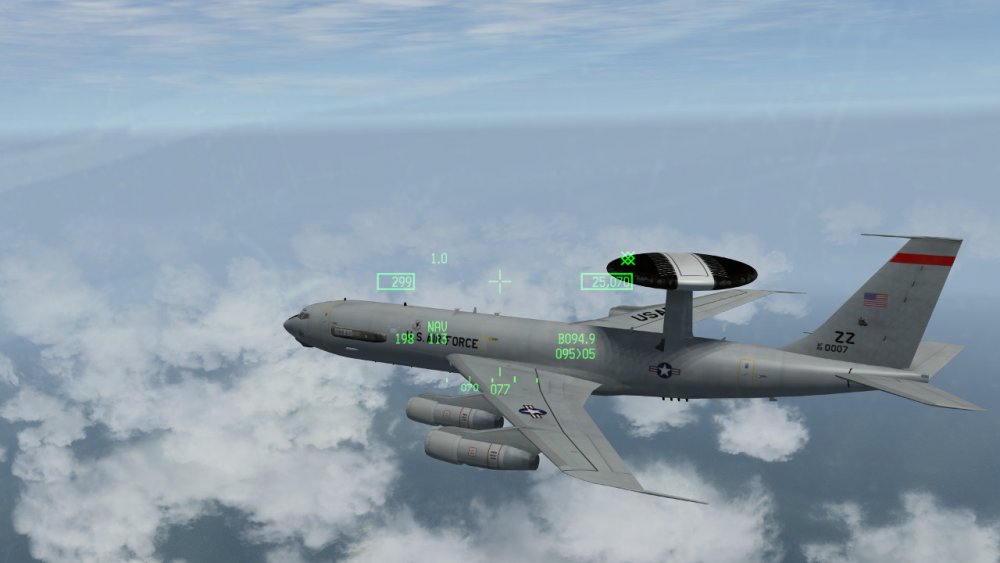
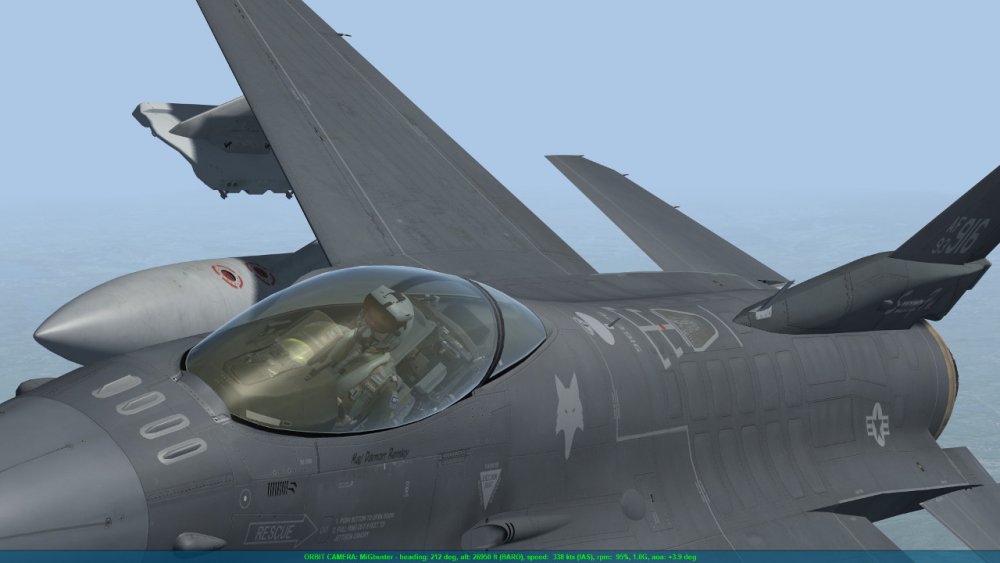

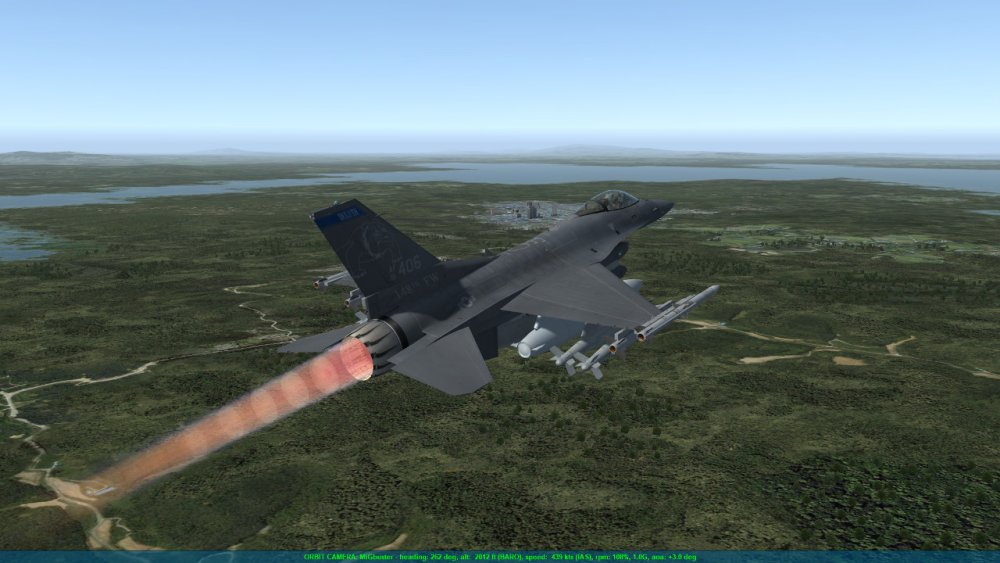

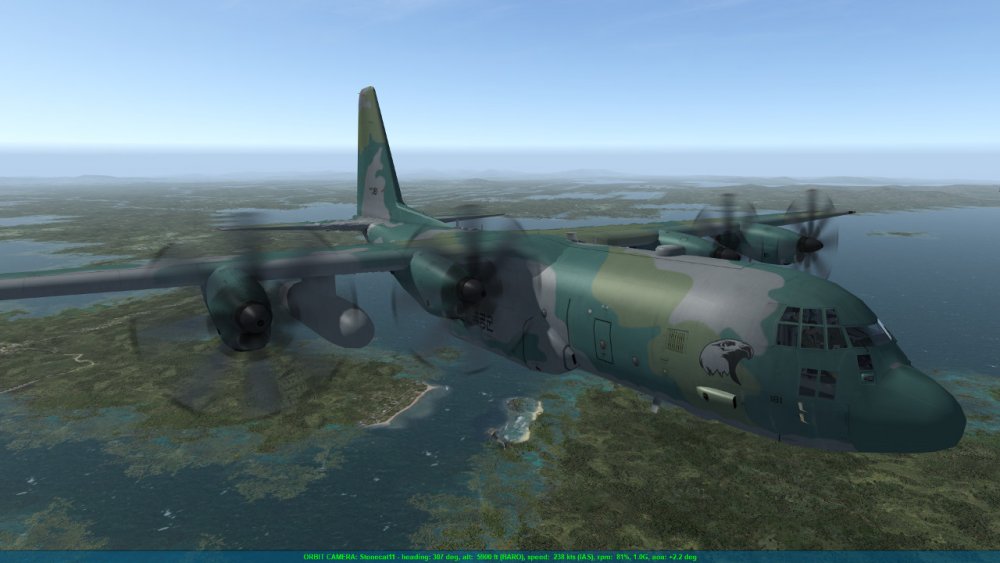
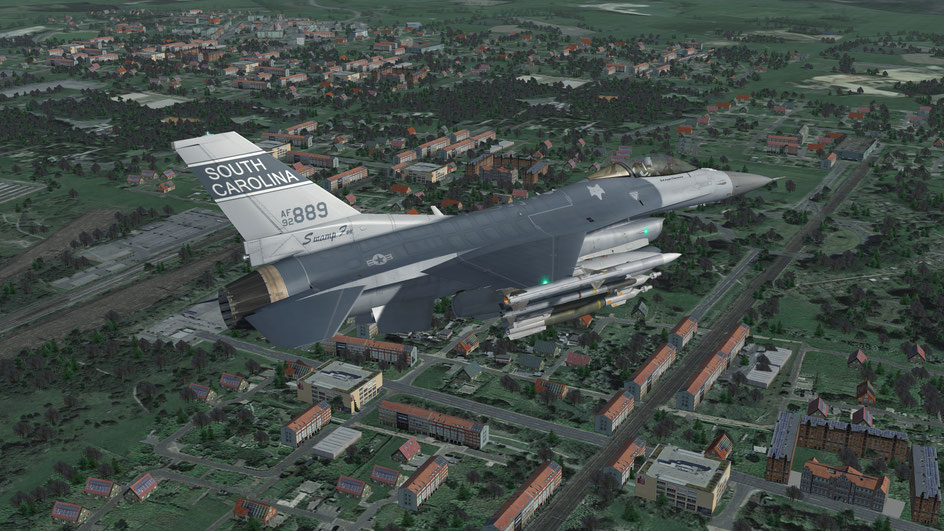
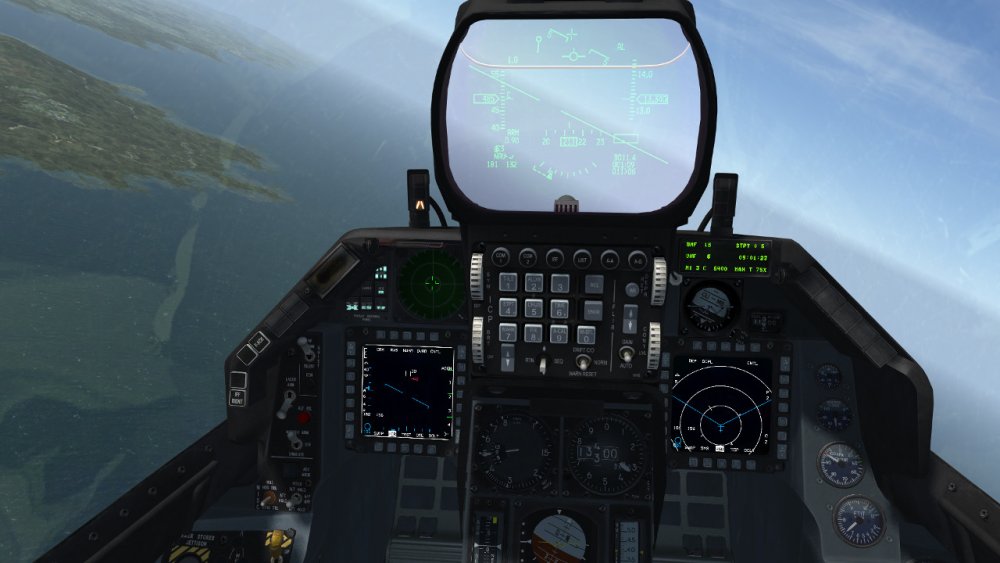
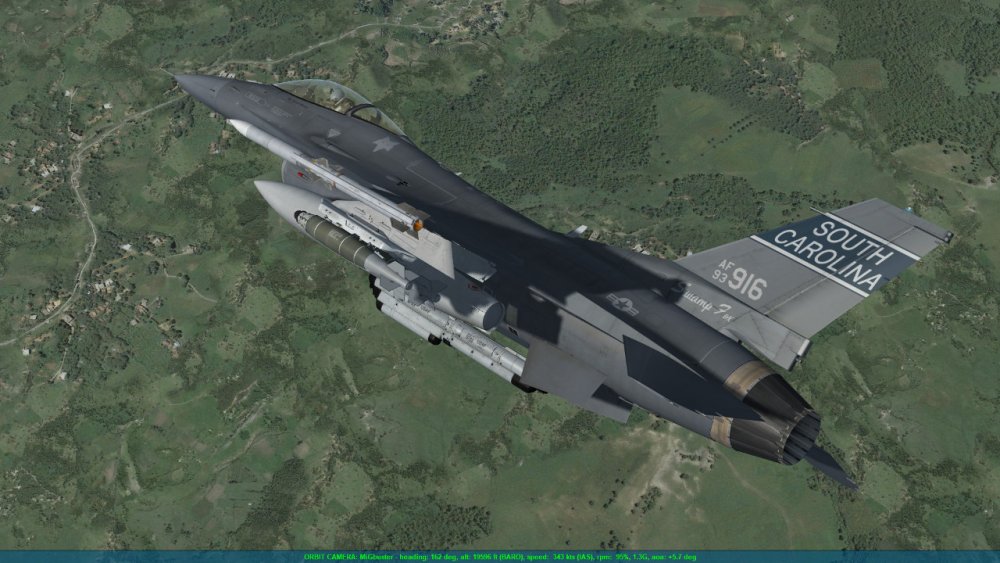
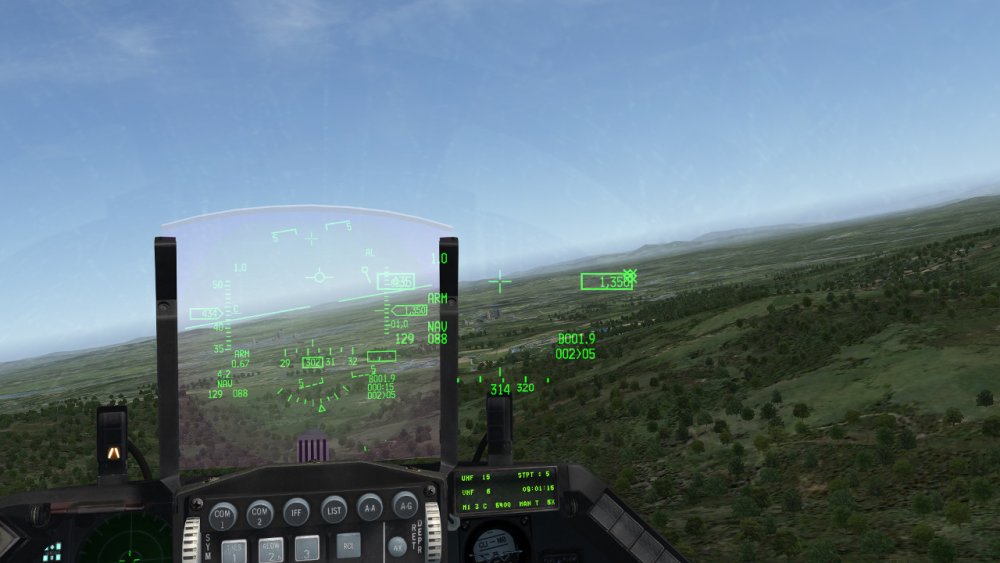
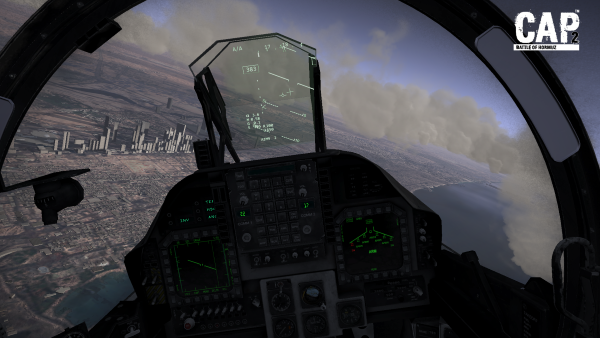

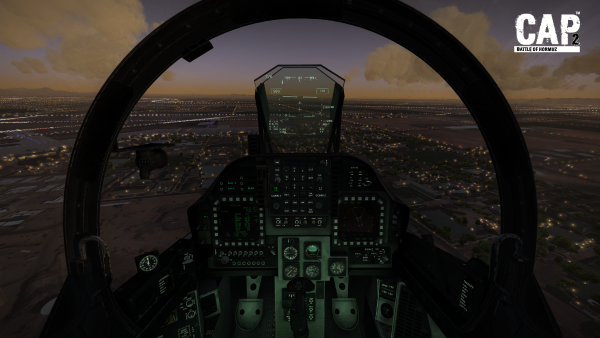
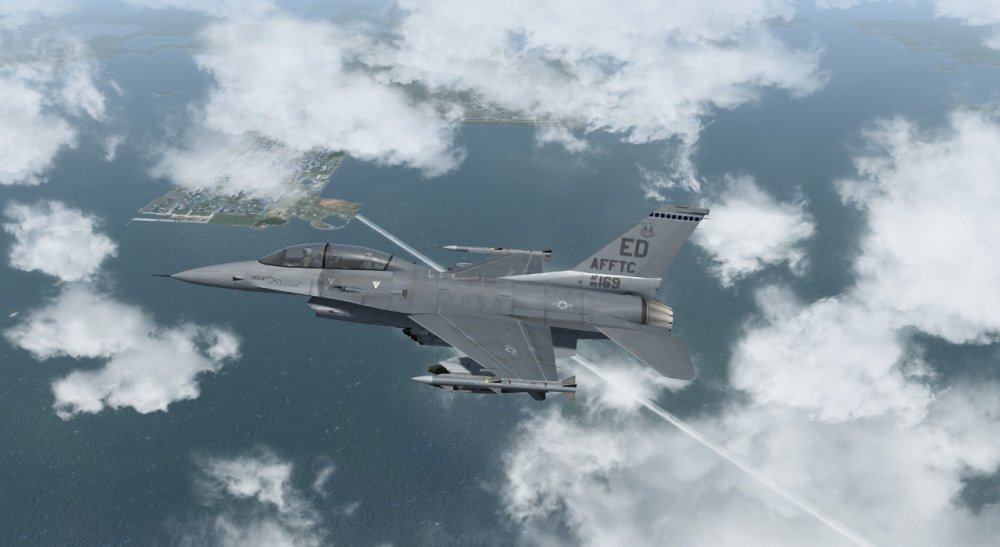
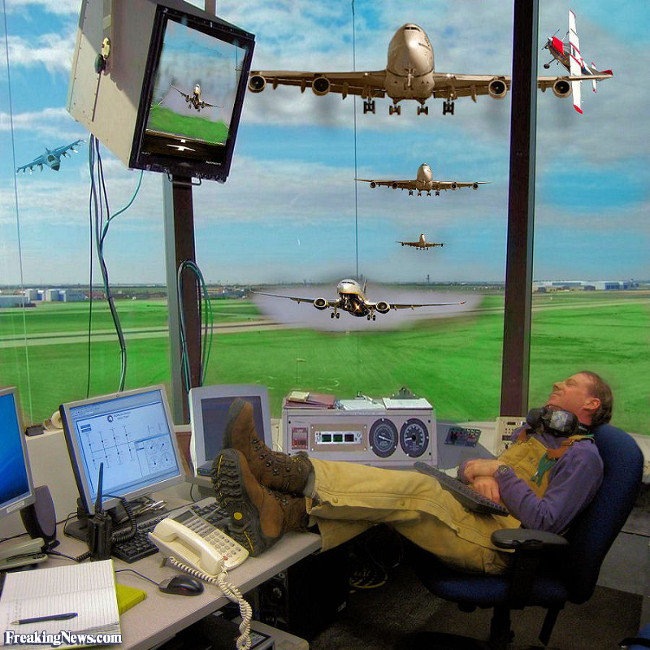

.thumb.jpg.d275c61af713f4e503c4de494481235b.jpg)
